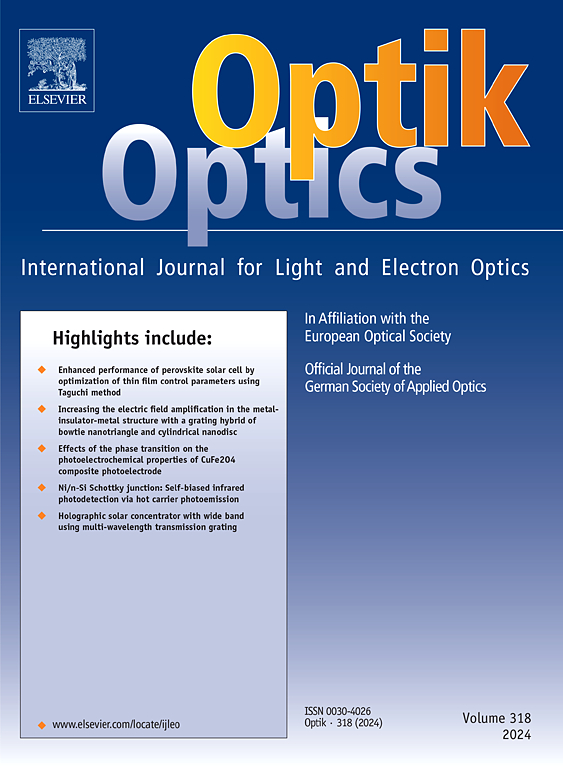Improving multi-wavelength overlay measurement time by the development of color-mixing light source
IF 3.1
3区 物理与天体物理
Q2 Engineering
引用次数: 0
Abstract
This paper introduces an innovative approach to streamline the time-consuming process of multiple-wavelength measurement in semiconductor overlay metrology. To achieve this, a color-mixing light source was developed, which employed light sources of different wavelengths, each modulated with different sine wave frequencies. By aligning these sources and directing them simultaneously onto the test sample, we mixed all wavelength information into a single test signal. Leveraging the known modulation frequencies, we can accurately extract the amplitudes of each wavelength using a three-parameter sine wave fitting method. These amplitudes effectively represent the sought-after signal for each wavelength. A 4-wavelength mixed light source was developed to demonstrate this method's feasibility. Compared with the intensities received independently for each wavelength, the reconstructed amplitude error was below 5 %. Finally, in the test of multiple-wavelength overlay measurement, the overlay difference between this and traditional methods was only 0.078 nm. The experimental results confirm that this method enables a reduction in the measurement time for multiple wavelengths from 0.8 sec to 0.2 sec, i.e., a 75 % reduction).
通过开发混色光源缩短多波长叠加测量时间
本文介绍了一种创新方法,以简化半导体叠层计量中耗时的多波长测量过程。为此,我们开发了一种混色光源,该光源采用不同波长的光源,每个光源以不同的正弦波频率调制。通过对准这些光源并同时将其照射到测试样品上,我们将所有波长信息混合到一个测试信号中。利用已知的调制频率,我们可以使用三参数正弦波拟合方法精确提取每个波长的振幅。这些振幅有效地代表了每个波长所需的信号。为了证明这种方法的可行性,我们开发了一种 4 波长混合光源。与每个波长独立接收的强度相比,重建的振幅误差低于 5%。最后,在多波长叠加测量测试中,该方法与传统方法的叠加差仅为 0.078 nm。实验结果证实,这种方法可将多波长测量时间从 0.8 秒缩短到 0.2 秒,即缩短 75%)。
本文章由计算机程序翻译,如有差异,请以英文原文为准。
求助全文
约1分钟内获得全文
求助全文
来源期刊

Optik
物理-光学
CiteScore
6.90
自引率
12.90%
发文量
1471
审稿时长
46 days
期刊介绍:
Optik publishes articles on all subjects related to light and electron optics and offers a survey on the state of research and technical development within the following fields:
Optics:
-Optics design, geometrical and beam optics, wave optics-
Optical and micro-optical components, diffractive optics, devices and systems-
Photoelectric and optoelectronic devices-
Optical properties of materials, nonlinear optics, wave propagation and transmission in homogeneous and inhomogeneous materials-
Information optics, image formation and processing, holographic techniques, microscopes and spectrometer techniques, and image analysis-
Optical testing and measuring techniques-
Optical communication and computing-
Physiological optics-
As well as other related topics.
 求助内容:
求助内容: 应助结果提醒方式:
应助结果提醒方式:


